List of author's articles
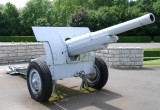
105 mm barrel Model 1913 Schneider
The Schneider system gun with centric bolt was manufactured from summer 1914 by Schneider et Cie. in Creusot. The cannon was produced in a total of over 2,000 units and was acquired by seven European armies in addition to the French Army, which had it in their armoury throughout the interwar period.
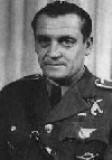
Alexander Hess

Chapters from the history of the Czechoslovak military (1914 - 1992) 1.

Chapters from the history of the Czechoslovak military (1914 - 1992) 1.

Chapters from the history of the Czechoslovak military (1914 - 1992) 2.

Chapters from the history of the Czechoslovak military (1914 - 1992) 3.

Chapters from the history of the Czechoslovak military (1914 - 1992) 4.

Chapters from the history of the Czechoslovak military (1914 - 1992) 4.
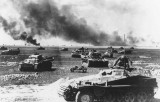
Clash of titans
The anniversary of the outbreak of the Soviet-German war provides an opportunity to recall some moments and ambiguities in the preparation and launch of hostilities. In this case, we will try to generalize certain data concerning tank units and their armament on both sides of the war. Although this topic has been studied in great detail in Russian literature for the last 15 years, we have preserved very outdated information in this field, at best from the early 1990s, at worst even the ideological floppy of Soviet propaganda.

Czechoslovak Air Force in the Sudetenland crisis - general consideration

Flying Fortress Division (45th Gomel Long-Range Aviation Division)
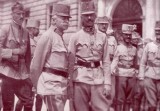
General and Marshal of the Three Armies
Generalfeldmarschall Eduard Free Lord von Böhm-Ermolli was a soldier by profession of the Austro-Hungarian army in the rank of field marshal. At the same time, he was one of the most capable commanders of the Austro-Hungarian army during the First World War.

Geopolitical aspects of Soviet aggression against Czechoslovakia in August 1968

Geopolitical aspects of Soviet aggression against Czechoslovakia in August 1968 - 1. Introduction

Geopolitical aspects of Soviet aggression against Czechoslovakia in August 1968 - 2. Theoretical foundations of the Soviet military

Geopolitical aspects of Soviet aggression against Czechoslovakia in August 1968 - 3rd Soviet Army in the 1960s
The dissertation focuses on the general context of the aggressive action of the five armies of the Warsaw Pact Organization towards Czechoslovakia in August 1968. Unlike historiographies of generally favored ideological contradictions, it seeks explanation of the whole event in the basic aspects of promoting the superpower interests of the Soviet Union, especially in the military-strategic field. However, the problem with processing is the lack of primary information sources, which are still subject to the strictest secrecy. In contrast, information is available, including theoretical analyzes of doctrinal issues in the professional press. Above all, however, it is possible to use information on the practical implementation of organizational and conceptual guidelines, which were based on doctrinal and strategic concepts. Due to the close interconnectedness of the armed forces of the Warsaw Pact Organization, the basic outlines of Soviet strategic concepts can also be observed from their application in Czechoslovak conditions. Given the apparent continuity of Soviet foreign and military policy from the 1930s to the 1980s, geopolitical aspects of active Soviet involvement on the international stage could be defined. The Soviet political and military leadership, regardless of the ideological rejection of the terms "geopolitics" or "life interests," was in principle guided by them. The work thus shows the significant interconnectedness of Soviet superpower ambitions, especially with the European, Mediterranean and Middle Eastern space.

Geopolitical aspects of Soviet aggression against Czechoslovakia in August 1968 - 4. Organization of the Warsaw Pact

Geopolitical aspects of Soviet aggression against Czechoslovakia in August 1968 - 5. Soviet interests and geopolitics

Geopolitical aspects of Soviet aggression against Czechoslovakia in August 1968 - 6. Conclusion

Geopolitical aspects of Soviet aggression against Czechoslovakia in August 1968 - 7. Information sources

German Armed Forces and its higher command in the fall of 1938

Heavy cannon vz.35 caliber 10.5 cm
A weapon of the Škoda system with a horizontal wedge breech, manufactured by the Joint-Stock Company, formerly the Škoda Plant in Pilsen, since December 1935 for both domestic users and exports.

Heavy mortar vz.18 caliber 14 cm
Weapon system Škoda, produced in 1918 by Škoda works, a joint stock company in Pilsen.
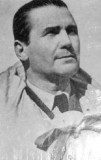
Ján Ambruš

Modern reconnaissance body of the armed forces

Punch at dawn

The battle of the Czechs with the Czechs

The beauty of European faleristics
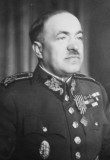
The Czechoslovak Republic and its armed forces in 1938

When two do the same ...
Join us
We believe that there are people with different interests and experiences who could contribute their knowledge and ideas. If you love military history and have experience in historical research, writing articles, editing text, moderating, creating images, graphics or videos, or simply have a desire to contribute to our unique system, you can join us and help us create content that will be interesting and beneficial to other readers.
Find out more